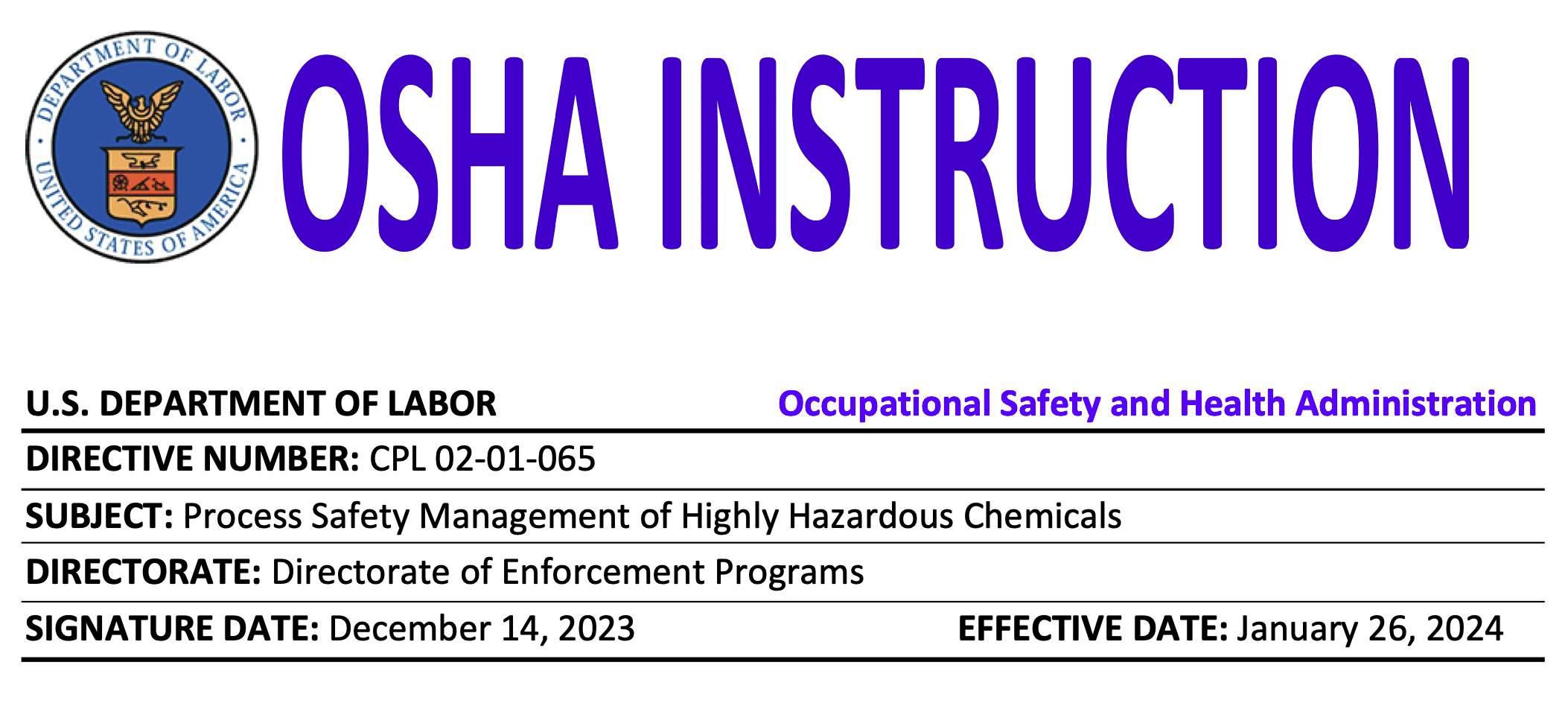OSHA PSM Guidance on Incident Investigation

New OSHA Instruction: PSM Investigation Guidance
OSHA has published a new instruction for OSHA enforcement personnel. It is in a question-and-answer format. The section about incident investigation is shown below.
M. 1910.119(m) – Incident Investigation
QM-01: Can an employer reject their incident investigation team’s recommendation(s)
that are contained in the team’s incident report?
Response: Yes. An employer may reject their incident investigation team’s
recommendation(s) that are contained in the team’s incident report. However, Section
1910.119(m)(1) requires that a team be established to investigate every “incident which
resulted in, or could reasonably have resulted in a catastrophic release of [HHCs].”
Section 1910.119(m)(5) requires the employer to promptly “address and resolve”
recommendations and document corrective actions. Similar to Section 1910.119(e)
regarding PHAs, this provision was designed to require the employer to respond to the
investigation findings and recommendations, while at the same time allowing the
employer the flexibility not only to reject incident investigation recommendations that
are erroneous or infeasible, but also to modify recommendations that may not be as
protective as possible or may be no more protective than less complex or expensive
measures. (See 57 Fed. Reg. 6395/3.)
OSHA considers an employer to have “resolved” the investigation team’s findings and
recommendations when the employer either has adopted the recommendations or has
justifiably declined to do so. Resolutions and corrective actions shall be documented.
When an employer chooses to accept an incident investigation team’s finding or
recommendation, the employer is required to document what actions are to be taken;
complete actions as soon as possible; develop a written schedule of when these actions are to be completed; and communicate the actions to operating, maintenance and other employees whose work assignments are in the process and who may be affected by the recommendations or actions.
Where a recommendation is rejected or modified, the employer should communicate
this to the team, and expeditiously resolve any subsequent recommendations of the
team.
An employer can justifiably decline to adopt an incident investigation team’s
recommendation where the employer can document, in writing and based upon
adequate evidence, that one or more of the following conditions is true:
- The analysis upon which the recommendation is based contains material factual errors;
- The recommendation is not necessary to protect the health and safety of the employer’s own employees, or the employees of contractors;
- An alternative measure would provide a sufficient level of protection; or
- The recommendation is infeasible.



